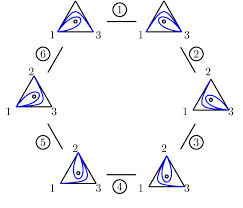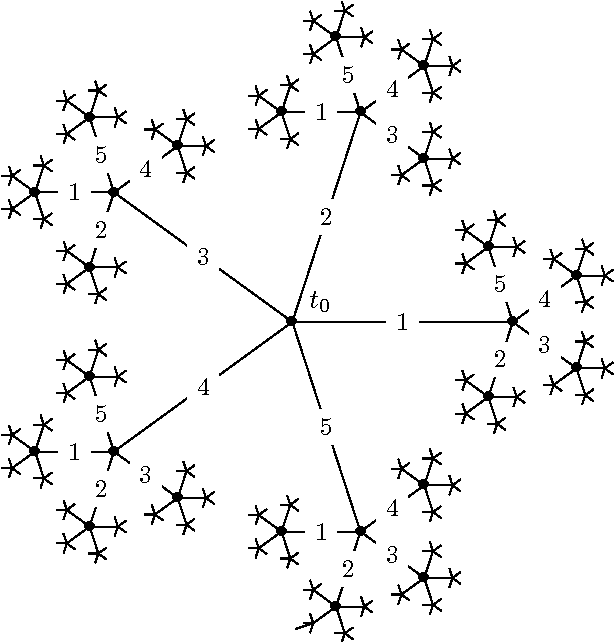


Geometry and Topology Seminar
Next Talk
- Wednesday, April 26, 11:30 am-12:30 pm EST
- Kevin Li, University of Regensburg
- Title: Vanishing homology via open covers
- Abstract:
Let X be an aspherical space and let U be an open cover of X. If the fundamental groups of the open subsets in U are small (e.g. trivial, finite, amenable), then homological invariants of X (e.g integral homology, rational homology, L^2-Betti numbers, comparison map for bounded cohomology) vanish in degrees above the multiplicity of U.
I will present a unified approach to such vanishing results using classifying spaces for families of subgroups. Joint with Clara Löh and Marco Moraschini.
Upcoming Talks
-
-
- PREVIOUS TALKS
- Wednesday, March 1, 2023 11:30 AM EST
- Davide Spriano, Oxford
- Title: Hyperbolic models for CAT(0) spaces
- Abstract:
A very successful approach in geometric group theory is to construct ``hyperbolic models'' for interesting groups, namely a hyperbolic space on which a (non-hyperbolic) group acts in a nice enough way. The earliest example of this philosophy is the Bass-Serre, and other more recent examples include the curve graph for mapping class groups, contact graph for cubical groups, free factor/free splitting/cyclic splitting complex for Out(F_n) and so on.
- Wednesday, March 22, 11:30 am-12:30 pm EST
- Alex Margolis, Vanderbilt
- Title: Model geometries dominated by locally finite graphs
- Abstract:
The central theme of geometric group theory is to study groups
via their actions on metric spaces. A model geometry of a finitely
generated group is a proper geodesic metric space admitting a geometric
group action. Every finitely generated group has a model geometry that
is a locally finite graph, namely its Cayley graph with respect to a
finite generating set. In this talk, I investigate which finitely
generated groups G have the property that all model geometries of G are
(essentially) locally finite graphs.
I introduce the notion of domination of metric spaces and give necessary
and sufficient conditions for all model geometries of a finitely
generated group to be dominated by a locally finite graph. This
characterises finitely generated groups that embed as uniform lattices
in locally compact groups that are not compact-by-(totally
disconnected). Among groups of cohomological dimension two, the only
such groups are surface groups and generalised Baumslag-Solitar groups.
- Wednesday, March 29, 11:30 am-12:30 pm EST
- Alex Rasmussen, University of Utah
- Title: Transverse measures to infinite type laminations
- Abstract:
Geodesic laminations are crucial tools for studying mapping class groups and three-manifolds. However, little is understood about laminations on infinite type surfaces. In this talk, we consider the cone of transverse measures to a geodesic lamination on an infinite type surface. We show that this cone admits an explicit description as an inverse limit of finite-dimensional cones. We use this explicit description to illustrate exotic new behaviors exhibited by laminations on infinite type surfaces. This talk is joint work with Mladen Bestvina.
- Wednesday, April 5, 11:30 am-12:30 pm EST
- Diana Davis, Exeter Academy
- Title: Periodic billiards on regular polygons
- Abstract:
Imagine that you hit a ball in a regular polygon-shaped billiard table, and after bouncing around for a while, the ball comes back to where it started and then repeats its path. I've been studying these "periodic" paths for many years, and it turns out that they're very beautiful, like mathematical art. I'll show lots of pictures, and explain the underlying tree and group structures. This is joint work with Samuel Lelièvre.
- Wednesday, April 12th, 11:30 am—12:30 pm EST
- Daniel Berlyne, University of Bristol
- Title: Braid groups, cube complexes, and graphs of groups
- Abstract: The braid group of a space X is the fundamental group of its configuration space, which tracks the motion of some number of particles as they travel through X. When X is a graph, the configuration space turns out to be a special cube complex, in the sense of Haglund and Wise. I show how these cube complexes are constructed and use graph of groups decompositions to provide methods for computing braid groups of various graphs, as well as criteria for a graph braid group to split as a free product. This has various applications, such as characterising various forms of hyperbolicity in graph braid groups and determining when a graph braid group is isomorphic to a right-angled Artin group.


